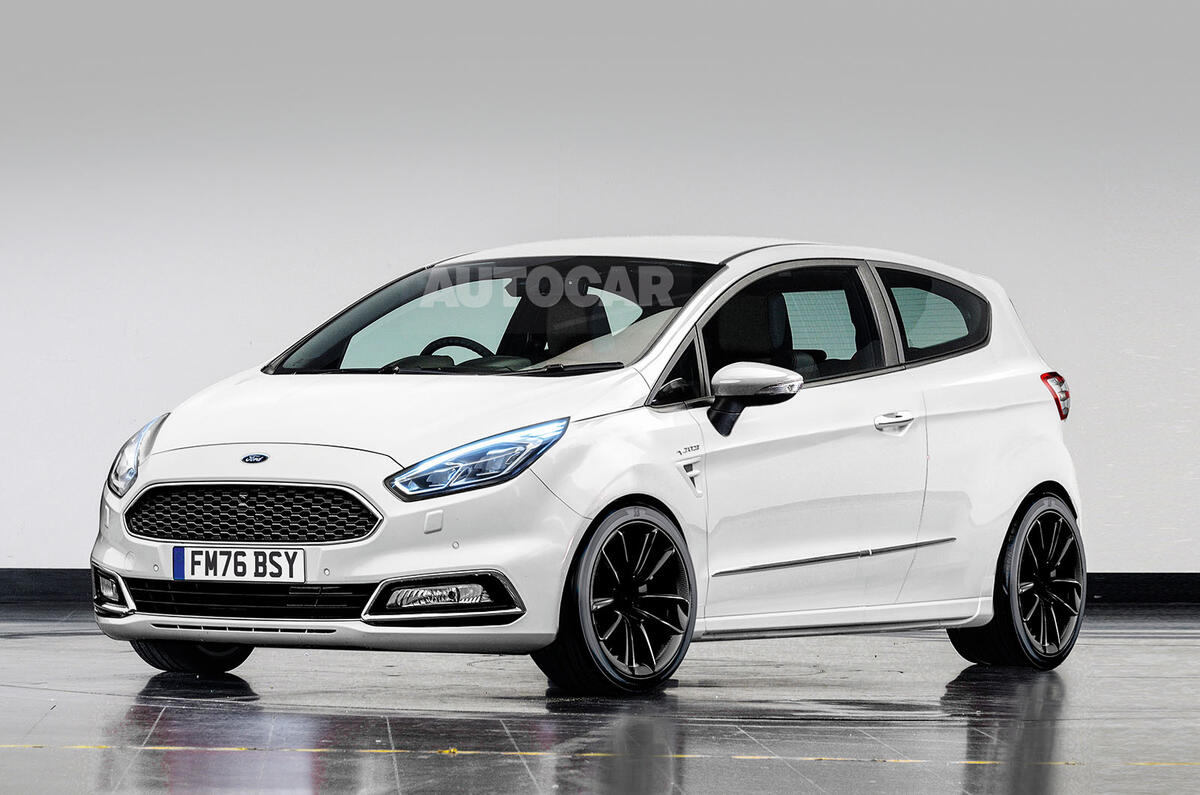The next-gen Ford Fiesta will build on the current car’s success with more mature looks and a higher-quality cabin.
The design and mechanical layout of the seventh-generation Ford Fiesta supermini, due to be unveiled at the end of this year, has been heavily influenced by two familiar small cars.
The 2017 Ford Fiesta has been revealed today
One is the new budget Ka+, which promotes the Ka nameplate from the A-segment to the B-segment and frees the new Fiesta to move to a ‘mainstream premium’ position in Ford marketing parlance.
The other influencer is the current, sixth-generation Fiesta, which is still setting records after seven years on sale. Its enduring popularity and great road ability reassure Ford that its customers will be happy with an evolutionary car.
“The current Fiesta has been so successful,” one Ford insider told Autocar, “that it has earned the right to evolve.”
Like the current car, the new Fiesta will be based on Ford’s Global B platform, also used in a simpler form for the Ka+. That means the new Fiesta will be very similar in overall length and wheelbase to the existing car, although there is talk of slightly wider tracks.
Clues to chassis spec came to life with the current Fiesta ST, when suspension engineers decided the twist beam rear suspension needed retooling to preserve handling balance and improve ride comfort. But the investment needed was not forthcoming until Ford committed to using familiar but improved components in the next-generation car.
So the new Fiesta will have a developed version of the outgoing model’s platform, complete with tuned but fundamentally unaltered MacPherson strut front suspension, rack and pinion steering and a twist beam rear end. Although manufacturers such as Renault have dropped three-doors from their supermini ranges, the new Fiesta will continue in three-door and five-door versions.
Scoop photographs show a car with exterior styling reminiscent of the outgoing model’s but with a wider and more grown-up look brought by extra width, a lower bonnet, thinner headlights and horizontal tail-lights to replace the current vertical affairs. Ford hopes no current owner will be put off by the new look.
The cabin styling, especially the fascia, will be simpler and focus on making the car more spacious and airy — not least because the current car’s ‘looming’ dashboard was one of its few unpopular features. The presence of the Ka+ in the B-segment’s lower reaches will also allow interior quality and materials to be enhanced, to compete with the likes of Volkswagen.
The Fiesta’s gentle move upmarket should allow it to major, at least for petrol engine buyers, on the 1.0-litre three-cylinder Ecoboost engine, now available in three power levels, with the 1.5 TDCi four-cylinder unit as diesel support. The sixspeed dual-clutch Powershift auto will continue until multispeed ‘hydraulic’ autos arrive in two or three years’ time. Ford is also certain to continue with its class-beating Fiesta ST.
The clear intention is to avoid ‘frightening the horses’ with its new Fiesta when the car goes on sale in the first half of next year, with current models accounting for one-third of European Ford sales. But the company also wants to offer something new, with greater concentration on quality and better materials.
Read more: Ford Fiesta Studio and Style trim levels dropped from UK line-up








Join the debate
Add your comment
When you're the undisputed class leader...
jason_recliner wrote:
Remove the spin from the sales figures and we'd have a very different picture.
Ford's interiors are what
When a manufacturer says a